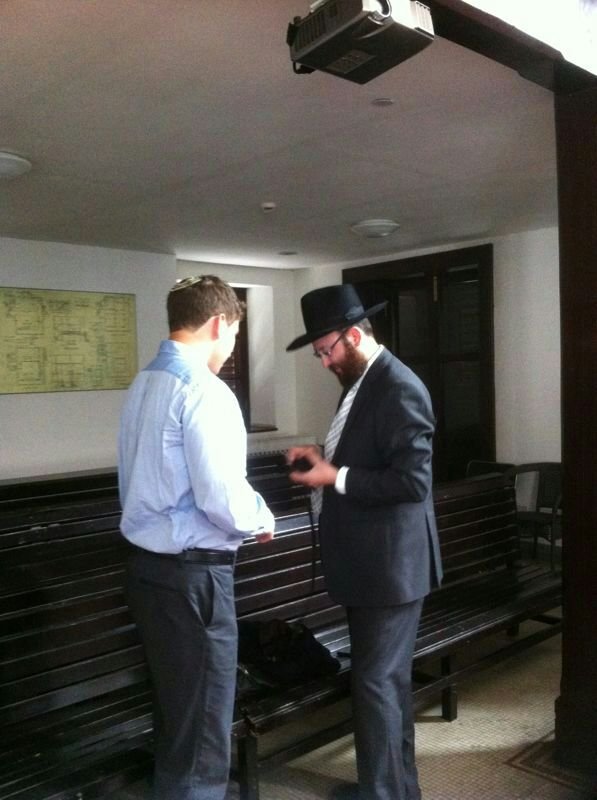|
As a Chabad emissary in Shanghai, Rabbi Abraham Greenberg has abundant experience putting tefillin on other people. But even Greenberg was surprised when Avner Netanyahu, Prime Minister Binyamin Netanyahu’s youngest son, approached him during his father’s tour of the Shanghai Jewish Refugees Museum and asked if he had a pair of tefillin on Tuesday.
The younger Netanyahu, a 12th-grader in Jerusalem, told the rabbi that he did not have time in the morning to pray, and asked if he had any tefillin handy. Greenberg did.
So as his father and mother were touring the museum that tells the tale of some 18,000 Jewish refugees from Europe who found shelter in the city during the Holocaust, as a Chinese woman was playing a languid tune on a violin in an atrium and as the press and invited guests were milling around, Avner went into the small Ohel Moshe synagogue that makes up part of the museum complex and put on tefillin.
The word “synagogue” in this context is a bit of a misnomer.
The structure, built in 1927 by Iraqi Jews who predated the influx of refugees from Europe, once did serve the Jews in Shanghai as a central place of worship, but has since been restored not as a living, breathing synagogue, but rather as a museum.
There is a bima (podium), an ark and even a purple ark cover – donated by Israel’s consulategeneral in the city – inscribed with the words “Tribute to the Hongkou People who provided refuge to Jews in time of need.”
But there is no Torah inside the ark. The Chinese government, apparently, is not interested in turning the site – located in the city’s Hongkou district – into an active synagogue, but rather wants to preserve it as a historic site and keep it as a museum.
There are, however, three Chabad houses in the city that do serve as synagogues. One of those Chabad houses provided the Netanyahu entourage with kosher food during the prime minister’s two-night stay in Shanghai, a city not blessed with an abundance of kosher eateries.
Since Ohel Moshe does not function on a regular basis as a synagogue, Avner did not find a prayer book there. Instead, he pulled out his cellular phone and called up a prayer book on his phone.
As cameras clicked, the younger Netanyahu prayed, covering his eyes during recitation of the Shema, and taking three steps backward and then forward for the Amida, seemingly oblivious to those watching him Among those looking on was a Chinese official, intrigued by what the young Netanyahu was doing. After Netanyahu finished, the man approached him and politely asked what he had just wrapped around his arm. Avner, who regularly wears a knitted kippa, briefly explained in English the morning ritual, and ended by saying, “It reminds us daily of who we stand before.”
|

